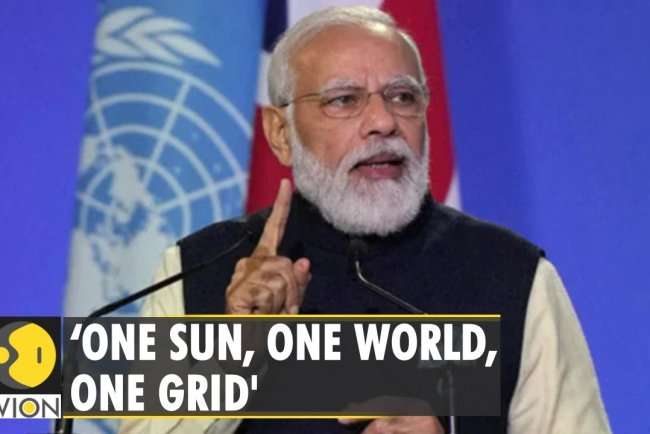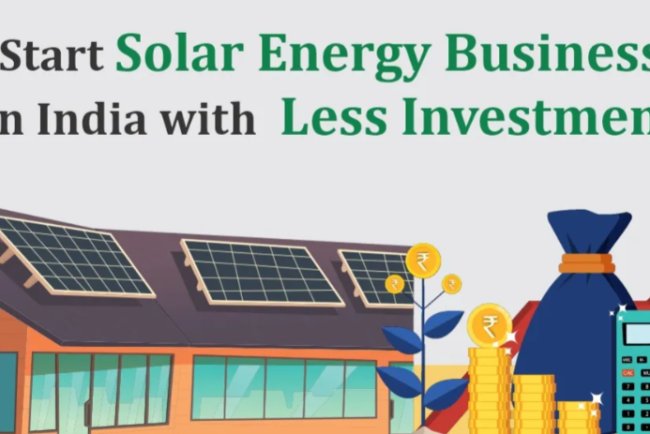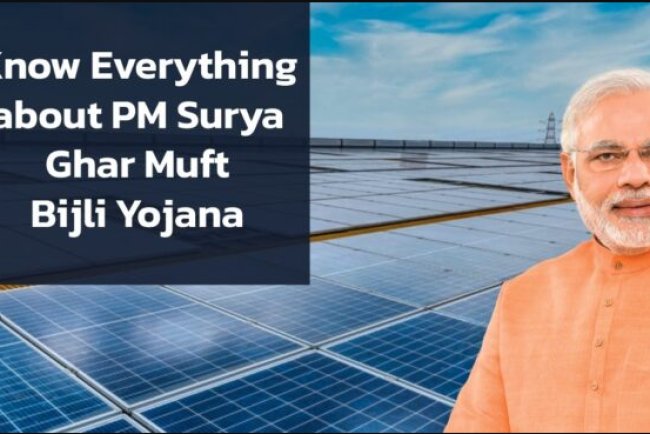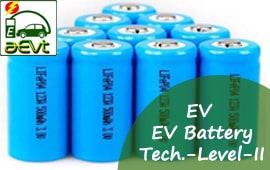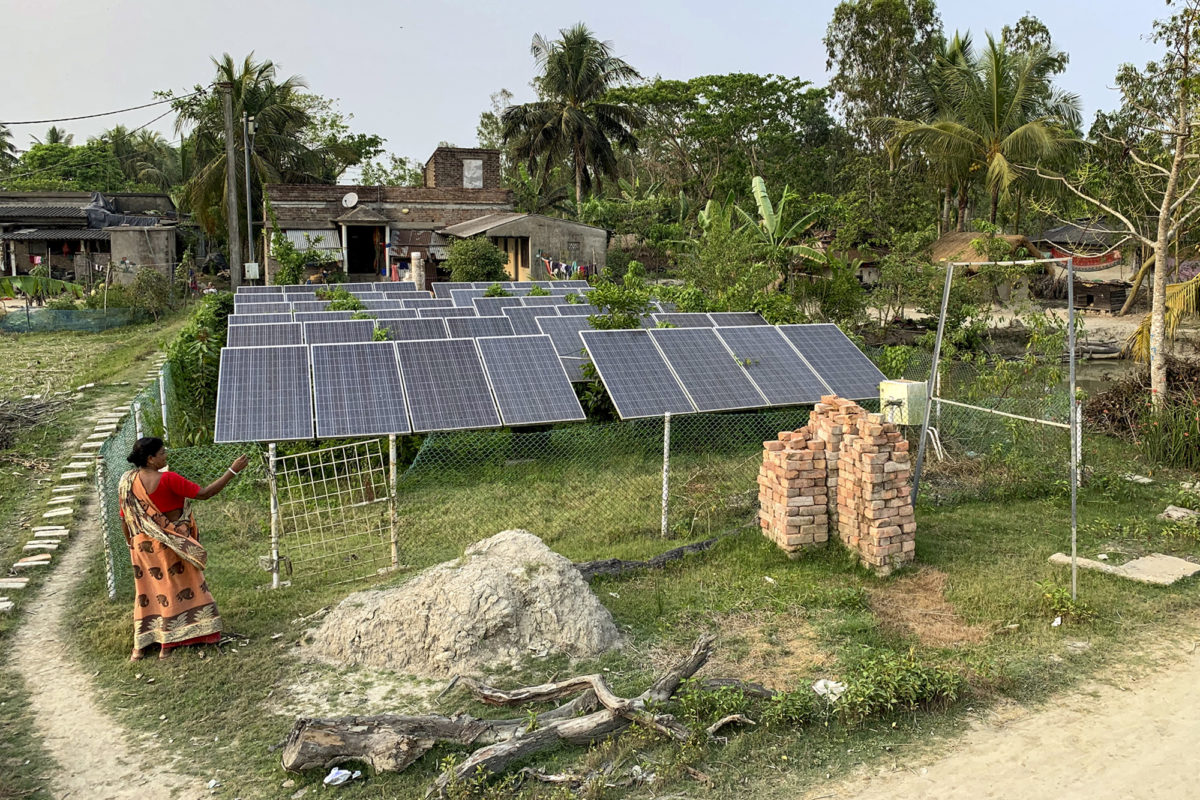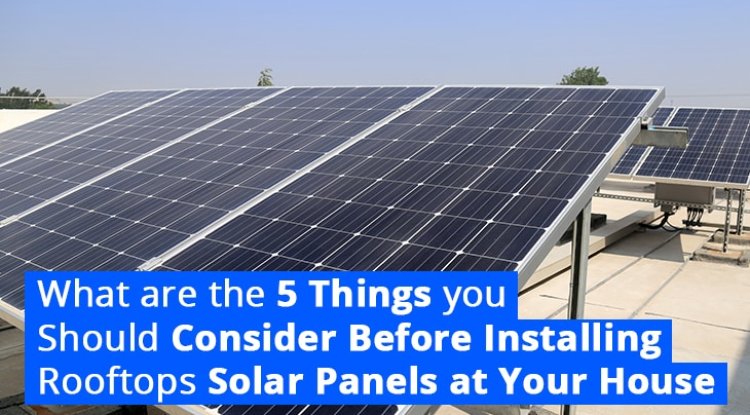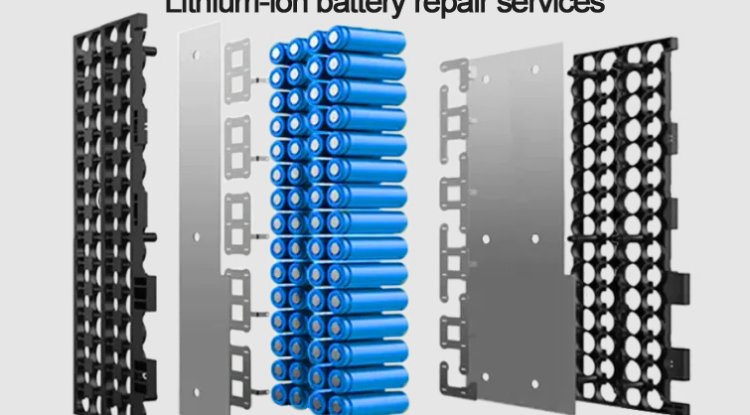Indian PV Solar Achievements
PR Newswire: India's solar capacity reaches 90,762 MW in Q3 2024, achieving 214% growth year-over-year, driven by robust installations and policies

Contents
Update 23rd December 2025
In 2025, leading Indian PV module manufacturers include Waaree Energies, Adani Solar, Tata Power Solar, and Vikram Solar, known for scaling up production under government support (PLI, ALMM). Other significant players rapidly growing capacity and market share are Goldi Solar, RenewSys, Saatvik Green Energy, and Premier Energies, offering high-efficiency modules for utility, commercial, and residential projects. These companies leverage India's booming solar market to meet domestic demand with advanced, domestically-made technology.
|
Company |
Founded |
Location |
Total Solar Module Manufacturing Capacity (as of 31st March 2024) |
Products |
|
Waaree Energies Ltd. |
1989 |
Mumbai, Maharashtra |
13.3 GW |
Monocrystalline, polycrystalline PV modules, solar EPC solutions |
|
Tata Power Solar Systems Ltd. |
1989 |
Bengaluru, Karnataka |
4.3 GW |
Solar module manufacturing, EPC services, solar products |
|
Adani Solar |
2015 |
Ahmedabad, Gujarat |
4 GW |
Mono PERC, bifacial PV modules, Eternal, Elan series |
|
Saatvik Green Energy Pvt. Ltd. |
2015 |
Gurugram, Haryana |
3.8 GW |
Bifacial half cut, mono PERC half cut, mono-crystalline, poly-crystalline |
|
Vikram Solar Ltd. |
2005 |
Kolkata, West Bengal |
3.5 GW |
Somera, Paradea, Prexos, Eldora, Solivo series |
|
Premier Energies Limited |
1995 |
Secunderabad, Telangana |
3.36 GW |
P-Type monofacial and bifacial modules, dual glass modules |
|
Emmvee Power |
1992 |
Bengaluru, Karnataka |
3 GW |
Bi-facial modules, monofacial modules, polycrystalline modules |
|
Goldi Solar Pvt. Ltd. |
2011 |
Surat, Gujarat |
3 GW |
Heloc Pro, Heloc Plus |
|
RenewSys India Pvt. Ltd. |
2011 |
Mumbai, Maharashtra |
2.5 GW |
Deserv Sgalactic, Deserv Extreme, Deserv Mono, Deserv Multi |
|
Navitas Green Solutions Pvt. Ltd. |
2013 |
Surat, Gujarat |
2 GW |
Bonito Series, Navisol Series, Anora Series |
|
AXITEC Energy India Pvt. Ltd. |
2018 |
New Delhi |
2 GW |
AXIpremium HC, AXIpremium XXL HC BLK, AXIpremium XL HC, AXIblackpremium, AXIperfect, AXI(bi)protect |
|
Jakson Solar |
1947 |
Noida, Uttar Pradesh |
1.2 GW |
New Helia Series Monofacial Half Cell, bifacial half cell, polycrystalline PV modules |
|
Pixon Energy Ltd. |
2019 |
Rajkot, Gujarat |
1 GW |
Polycrystalline, mono-crystalline, PERC, half-cut cell PV modules |
|
Insolation Energy Ltd. |
2015 |
Jaipur, Rajasthan |
1 GW |
Solar PV module, solar PCU, solar battery, solar charge controller |
|
Sova Solar Ltd. |
2008 |
Kolkata, West Bengal |
850 MW |
Grid-tied/on-grid PV modules, cut cells, full cells |
Update 21st February 2025
500 MW Of Solar Cell Production
Swelect Energy is set to commence solar cell production soon, total solar module manufacturing capacity stands at 1 GW. And add another 1 GW and simultaneously establish a 500 MW solar cell production line.
Surat-based solar module manufacturer Cosmic PV Power is set to expand its cumulative solar module manufacturing capacity to 3 GW shortly. The company currently operates two manufacturing plants in Sura, 600 MW Mono-PERC solar module production line and 800 MW TOPCon solar module facility.
Maharashtra-based solar module manufacturer Novasys (Nova Solar) has now planned to start supplying TOPCOn solar modules from April of this year.
Gujarat-based solar module manufacturer - Ganesh Green Bharat, has announced the launch of IBC (Interdigitated Back Contact) solar cell-based modules for the Indian market.
“Currently, the efficiency of TOPCon solar cells stands at 25.2%, whereas IBC solar cells offer an impressive 27.5%. IBC is the latest technology, and as the industry transitions, adoption will increase.
Update 07th February 2025
Indian solar module manufacturer Waaree Energies will start production of 4GW TOPCon-based solar cell from April 2025.
Read more at: https://www.saurenergy.com/solar-energy-news/waaree-energies-to-start-topcon-cell-production-from-april
TOPCon cells offer higher efficiency, they are also more susceptible to environmental factors like humidity and chemical reactions, potentially leading to corrosion, encapsulant issues, and significant power losses, which could negate the efficiency gains.
TOPCon solar cells, despite their higher efficiency, are more vulnerable to environmental degradation compared to traditional PERC solar cells.
The thin metal contacts and the silicon nitride layers used in TOPCon cells are prone to corrosion, especially in high-humidity environments. The encapsulant material, which protects the solar cell from the elements, can also be a source of problems.Corrosion and encapsulant issues can lead to a decrease in the efficiency of the solar cell, resulting in a significant loss of power output. Research is ongoing to identify the degradation mechanisms and find ways to mitigate the effects of environmental factors on TOPCon solar cells.
Read more Attached file TOPCon-cell.pdf
Update 26th January 2025
The Ministry of New and Renewable Energy has released its updated Approved List of Models and Manufacturers (ALMM), pegging India’s cumulative enlisted solar module manufacturing capacity at 67.40 GW.
New Entrants and Capacity Additions
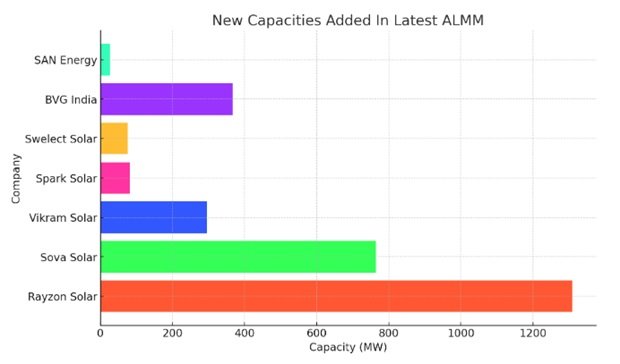
The latest ALMM highlights the addition of new capacities from eight domestic solar module manufacturers, including three new entrants. Notably, SAN Energy became the rst Bihar-based module manufacturing unit to be enlisted. The other two new entrants, BVG India Limited and KLK Ventures, are based in Uttar Pradesh.
Expansion by Existing Players
- Rayzon Solar – 1309 MW
- Sova Solar – 765 MW
- Vikram Solar – 296 MW
- Spark Solar – 82 MW
- Swelect Solar – 76 MW
India’s solar capacity
The growth in India’s solar capacity has been remarkable. In the first quarter (Q1) of 2024 alone, the country installed 9,795.56 MW of solar PV, achieving a staggering year-over-year growth rate of over 180% and installed capacity has reached impressive levels, surpassing 90 gigawatts (GW) by the end of September 2024. Specifically, as of the third quarter (Q3) of 2024, the actual installed solar PV capacity stands at 90,762.12 megawatts (MW). Specifically, as of the third quarter (Q3) of 2024, the actual installed solar PV capacity stands at 90,762.12 megawatts (MW).

This figure includes various types of installations, such as ground-mounted solar projects, grid-connected solar rooftop systems, hybrid projects that incorporate solar components, and off-grid solar solutions. This significant increase can be attributed to the imposition of the Approved List of Models and Manufacturers (ALMM) on solar PV modules.
Here are some other facts about India's solar power:
- Govt. Schemes - The Government of India has launched various schemes to encourage solar power generation, including the Solar Park Scheme, VGF Schemes, and CPSU Scheme.
- Solar initiatives - The government has launched schemes to boost solar adoption, such as the Production Linked Incentive (PLI) and the Scheme for Promotion of Manufacturing of Electronics Components and Semiconductors (SPECS).
- PM Surya Ghar - The recently announced PM Surya Ghar Program with a target to install solar panels on 10 million homes is another booster dose to produce solar panels locally. It is expected to need 30 GW rooftop PV capacity.
Solar Cells: Size
1. Monocrystalline cells large size has become the mainstream of the market, before 2018 125mm 156.75mm phased out, now basically extinct, the current mainstream size to 158.75mm (G1) 166mm (M6) 182mm (M10) 210mm (G12) mainly.
2. Solar cells according to the printing screen grinding has 5bb 6bb 9bb 10bb 11bb 12bb 13bb. version of the general half cells screen pattern, 210mm (G2) 2 minutes and a half and 3 minutes film co-exist.
Solar cell size future trend: by photovoltaic solar energy authority market forecast 158.75mm (G1) 166mm (M6) with the progress of time and technology, will be phased out, the future to 182mm (M8) 210mm (G2) as the mainstream.
wafer with the dimension of 156 mm, which has been defined as a standard for more than 10 years. For the 156 module size, the term “M0” wafer size then was defined. Later this was successively replaced by the introduction of the 156.75 mm M2 variant. Without any increase in the overall dimensions of 60 cell module, M2 wafers can increase module power by more than 5Wp, which is a significant boost for a competitive cost per watt, thus it became the mainstream and maintained that status for several years. The move from 156mm x 156mm to the larger formats of 156.75mm x 156.75mm in mass production started in 2016. The old 6” format (156mm x 156mm) we all recognize is expected to disappear completely from the market by the end of 2019, according to the 2019 edition of the ITRPV survey. Then the M3 variant, for example, was again extended by 2 mm to a total size of 158.75 mm and the M4 wafer to 161.7 mm and was mainly used for n-Type bifacial modules. In the end of another variant was launched on the market, which is the M6. The M6 has a wafer size of 166 mm and this results in a module size of 1776 x 1052 mm for the half-cell variant.
Market share of different Wafer Sizes
The M3 format is currently becoming the standard measure in the module range in Europe. Yet, other cell and module manufacturers still need to include the M6 variant in their portfolio in addition to the M2 and M3. Even now some companies are introducing the 210 mm variant, called M12. All efforts are being done to push high-efficiency products into the mainstream high-volume markets.
Manufacturing Capacity:
As of September 2024, India's installed solar capacity was 90.76 gigawatts (GW). This is a 30-fold increase from the previous nine years. India is the world's third largest producer of solar power.
Gujarat led the country’s photovoltaic (PV) manufacturing capacity, accounting for 46.1% of solar modules. Telangana accounted for 39% of annual solar cell production capacity, the highest in the country as of December 2023 and the country’s total solar module and cell production capacity grew to 64.5 GW and 5.8 GW, respectively.
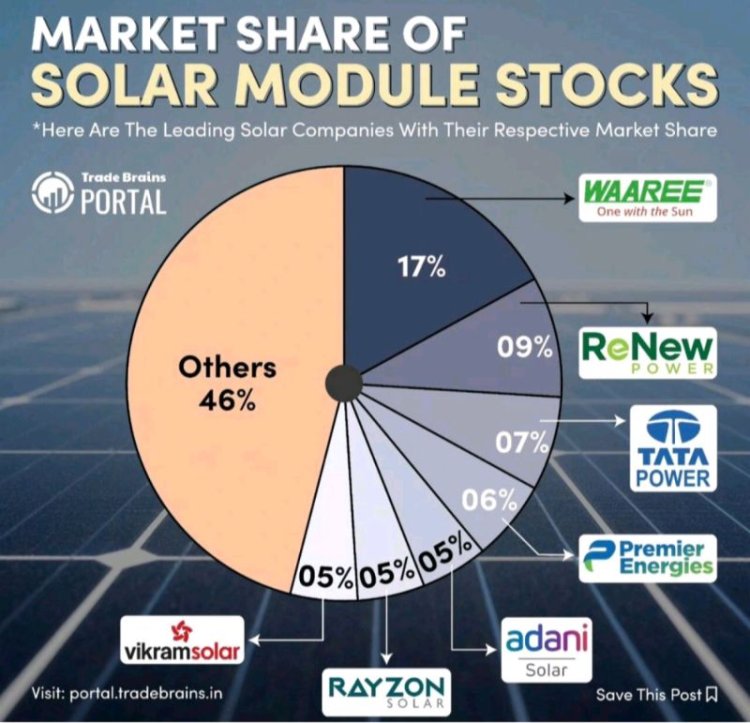
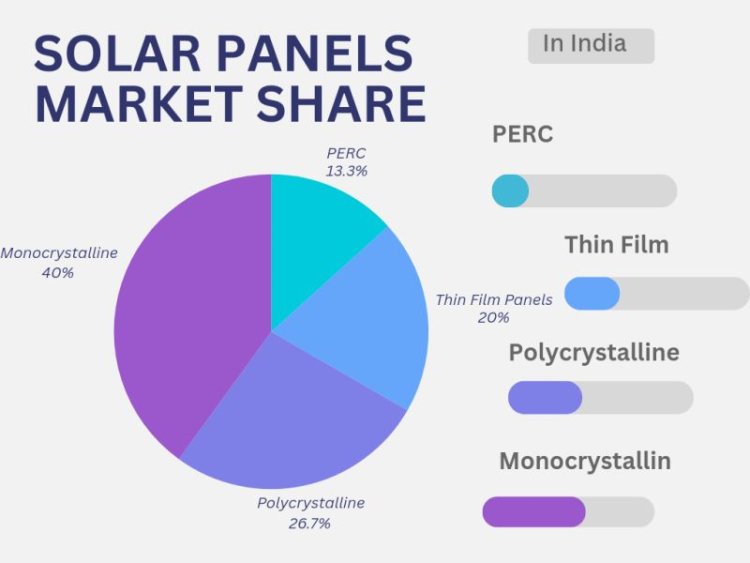
Solar cell and panel manufacturing capacity in India by state:
| State | Solar cell and panel manufacturing units |
| Gujarat | Has the highest capacity and number of manufacturing units, with 52% of the country's cell facilities. |
| Telangana | Has the highest annual capacity for solar cells at 39%. |
| Himachal Pradesh | Has 13.9% of the country's annual capacity for solar cells. |
| Karnataka | Has nine manufacturing units. |
| Uttar Pradesh | Has eight manufacturing units. |
| Maharashtra | Has six manufacturing units. |
| West Bengal | Has four manufacturing units. |
| Haryana | have three manufacturing units |
| Rajasthan | have three manufacturing units |
| Andhra Pradesh | have one manufacturing unit |
| Chhattisgarh | have one manufacturing unit |
| Goa | have one manufacturing unit |
| Jharkhand | have one manufacturing unit |
| Odisha | have one manufacturing unit |
| Tamil Nadu | have one manufacturing unit |
| Uttarakhand | have one manufacturing unit |
As of June 2024, India's solar PV manufacturing capacity is:
Solar module manufacturing capacity: 77.2 GW
Solar cell manufacturing capacity: 7.6 GW
India's PV cell imports in 2024
India imported $6.2 billion worth of solar cells and modules, a 178.5% YoY increase.
India's PV cell export in 2024
India's solar cell exports in the first half of 2024 were 148.6 MW, a 195% increase from the same period in 2023.
Programme/Scheme wise Cumulative Physical Progress:
| Sector | Achievements | Cumulative Achievements |
|---|---|---|
| Solar Power | 8948.49 | 90762.12 |
| Wind Power | 1476.41 | 47362.92 |
| Small Hydro Power | 72.5 | 5075.75 |
| Biomass (Bagasse) Cogeneration | 369.11 | 9802.67 |
(as on 30.09.2024) Source MNRE
Solar Project to make money
Solar energy itself is cost-effective. Systems produce free energy with limited maintenance for their lifespan, which averages 30 to 35 years. However, many people have to decide if solar is worth the investment.
By installing solar panels, you are entitled to earn money for every kWh that is injected back into the grid and can also claim a significant tax credit amount.
How can Earn Money From Solar?
If you want to earn money with little investment, you must install solar panels. You don’t need to have a separate space or a ton of money to install it. In India, the government has introduced several financial incentives and tax benefits to promote the adoption of solar energy. These initiatives not only make solar installations more affordable but also offer substantial long-term savings.
As a result, the final cost after installation may be less than the sticker price. Furthermore, tax credits given for solar power could help reduce annual tax bills. However, the best way to profit from having solar panels installed on your roof is through net metering. The financial benefits of solar energy don't stem from selling excess power back to the grid but from significant savings and credits. Unfortunately, selling your solar power to generate income is not a profitable option. Your solar energy system will save you money that you would otherwise spend on your monthly electricity bill from the utility company. In case of large solar developers can profit from installing a solar system on leased property and selling that electricity back to the property owner, this won’t be the case for your average solar system investor.
Offsetting Electricity Costs
Then comes free electricity for the entire life of the solar system, which could extend beyond 25 to 30 years. By eliminating your need to purchase electricity from the utility company, you’re eliminating an otherwise unavoidable expense each month: your electricity bill.
So, Installing solar panels lets you cut your electricity costs. When you generate clean energy, your bills drop or vanish. This savings adds up over the years, making it a smart choice for Indian homeowners. Solar energy is one of the best investments that will get you a higher rate of Return on Investment (ROI). Most solar panel systems tend to pay for themselves over time.
Calculating Solar Panel Savings
To see how much you might save with solar panels, use IST solar panel savings DISCOM calculator Excel file for residential and commercial plant. These tools can guess your savings. They look at how much energy you use, your solar system’s size, DISCOM rates, and solar bonuses in India.
Factors Affecting Savings
How much you save with solar panels depends on a few things. These include your system’s size, the cost to install, local electricity prices, and if you get solar bonuses or tax credits in India.
Saving on utility bills is the main benefit of solar panels. But there are other ways to earn money. Homeowners might make extra cash with community solar. They might also lease their roofs for solar companies to use. Yet, these chances to earn more are not very common, and how much you can make varies.
Tax Benefits for Solar Installations
Several tax benefits and incentives make solar installations financially attractive in India. Here’s a comprehensive look at the primary financial incentives available:
Section 32 of the Income-tax Act, 1961
Section 32 of the Income-tax Act outlines provisions related to depreciation on assets and provides the framework for the calculation of depreciation allowances. This section plays a crucial role in determining the taxable income of businesses by allowing them to account for the gradual loss in value of their assets over their useful lives.
Businesses installing solar power systems can avail of accelerated depreciation benefits under the Income Tax Act. This allows them to depreciate 40% of the asset's value in the first year, significantly reducing taxable income.
Under section 32(1)(iia)
If an assessee is engaged in the business of manufacture or production of any article or thing or in the business of generation or generation and distribution of power, an additional depreciation of 20 percent of the actual cost of new machinery or plant (other than ships and aircraft) shall be allowed as deduction.
Tax Holiday under Section 80-IA
Projects involved in power generation, including solar power, can benefit from a tax holiday under Section 80-IA of the Income Tax Act. This provision allows for a 100% tax exemption on profits for any ten consecutive years within the first fifteen years of operation. This is a substantial incentive for large-scale solar projects.
Goods and Services Tax (GST) Benefits
A uniform lower GST rate for solar energy equipment and services could reduce the overall cost of green energy projects. Currently, solar modules have a 12% GST, and solar power plant installation services have an 18% GST.
GST rates on solar power based devices
All renewable energy devices are taxed at 12% GST. 12% GST will be applicable on 70% of the total contract value and 18% on the remaining 30% value. So, we can say that tax incidence on goods is at 12% and services are at 18%. All the renewable energy devices covered under Chapter 84, Chapter 85 and Chapter 94 are charged at 12% GST. The project includes erection, procurement, and commissioning of a solar generating system, it will fall under ‘Works Contract Services’.
Capital Subsidy
Central Financial Assistance (CFA)/Subsidy is provided to the residential electricity consumers. The Ministry of New and Renewable Energy (MNRE) offers capital subsidies for residential rooftop solar installations. These subsidies can cover up to 30% of the installation cost, varying by state and project size.
Case Study
A company invests INR 1 crore in a solar power system. Under the accelerated depreciation scheme, it can depreciate 40% of the asset value in the first year, amounting to INR 40 lakhs. If the company is in the 30% tax bracket, it saves INR 12 lakhs in taxes for that year alone, significantly enhancing the financial viability of the solar project.
If a household plans to install a solar system costing INR 2 lakhs, a 30% subsidy would reduce the upfront cost by INR 60,000, bringing the effective cost down to INR 1.4 lakhs. This significant reduction in initial expenditure makes solar power accessible to a broader segment of the population.
Consider a middle-class family in Maharashtra, a state with a well-defined solar policy and substantial sunlight throughout the year. The family decides to install a 5 kW rooftop solar system costing INR 3 lakhs. Here’s how the financials could work out:
Capital Subsidy: INR 90,000 (30% of 3 lakhs)
Net Cost after Subsidy: INR 2.1 lakhs
Annual Electricity Savings: INR 60,000
Payback Period: Approximately 3.5 years
In addition to these savings, the family benefits from net metering, further reducing their electricity bills. Over the 25-year lifespan of the system, the cumulative savings can be substantial, making solar power a highly lucrative investment.
Conclusion
Investing in a home solar system is a smart financial decision that can save you money on your energy bills, increase the value of your property, and even generate income through various incentives and programs. With the right setup, a solar system can pay for itself within a few years and continue to provide financial benefits for decades to come. Whether you're looking to reduce your monthly expenses, earn extra income, or make a positive environmental impact, solar power offers a compelling solution for homeowners.
The road ahead looks promising, and as the country approaches the 280 GW milestone by 2030, it reinforces the belief that solar energy can significantly contribute to a sustainable future.
Source: MNRE
Download pdf version
RE News: Renewable energy Latest News & Resources - including solar, wind, hydropower, biofuels and others new and appropriate energy generation technology.

